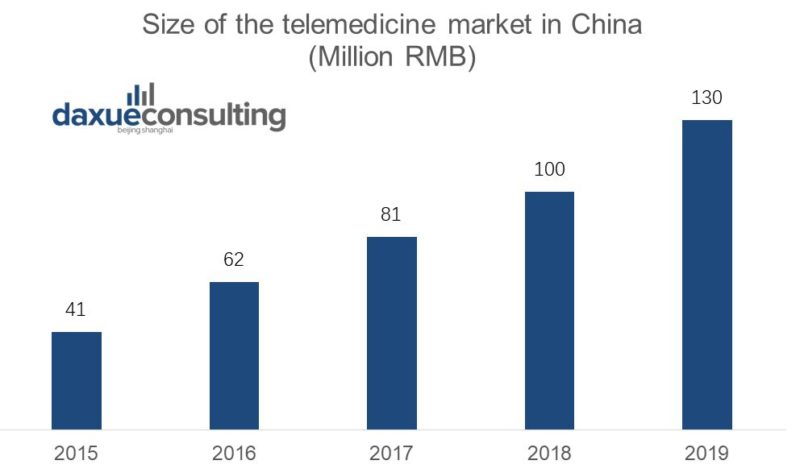
Data source: askCI.com- Market size of telemedicine in China from 2015-2019
Telemedicine consumer penetration
Given the COVID-19 situation in the beginning of 2020, it is no surprise that the penetration rate jumped up by 2% YOY. By April 2019, the number of users of online telemedicine services in China had reached 45 million, with industry penetration reaching 6.6%. The penetration rate continued to rise from 2018 to 2019 and will likely maintain its growth momentum in the future. It is expected to exceed 8% in 2020 and the scale of users will continue to expand.
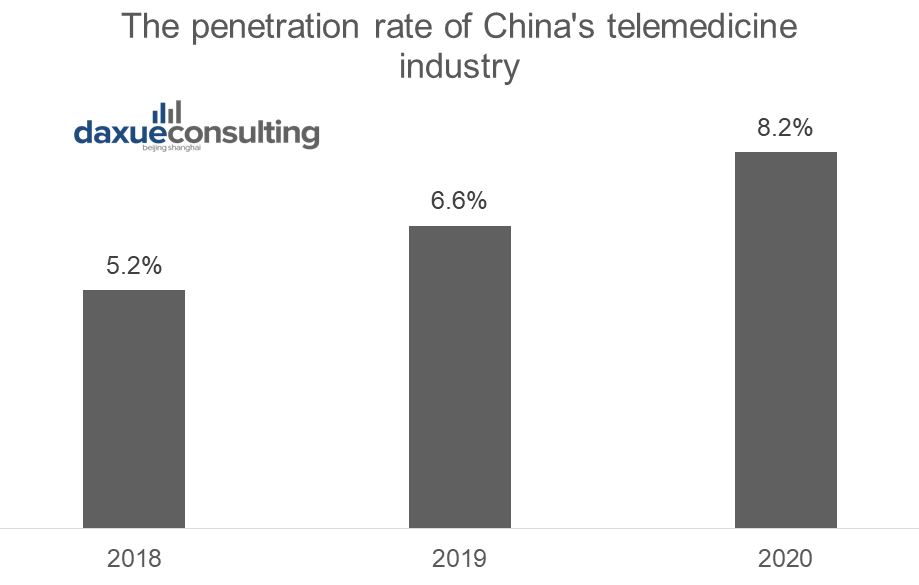
Telemedicine apps and websites are no longer just patients from 1st-tier cities, but people in 2nd and 3rd-tier cities are beginning to use telemedicine platforms. People under 35 years old are the main users, however, the middle-aged & elderly groups’ needs have not yet been explored. Telemedicine companies should pay more attention to the convenience and operability of online consultation to seize this part of consumers.
The characteristics of telemedicine industry in China
5G technology

Source: Sohu.com – Construction of 5G base stations is accelerating and 5G networks are expected to cover prefecture-level cities nationwide by the end of the year
In 2020, 5G technology helped telemedicine enter a new stage of development and explore new scenarios for application. Telemedicine in China started relatively late. In 1988, the PLA General Hospital conducted a remote case discussion of neurosurgery with a German hospital via satellite, which was the first telemedicine activity in the modern sense in China. China’s telemedicine industry has developed rapidly later on, owing to the development of computer technology, communication technology, digital medical equipment technology, hospital information management technology and a series of core technologies in telemedicine.
In early 2020, during the COVID-19 outbreak, China’s telemedicine was more widely applied and developed with the support of 5G technology. Zte and Sichuan Telecom assisted West China Hospital of Sichuan University and Chengdu Public Health Clinical Medical Center to realize 5G remote consultation of two COVID-19 cases for the first time.
5G telemedicine trolley has been launched in Wuhan Huoshenshan Hospital. In some places, China Mobile has launched the application of “5G infrared thermal imaging temperature measurement” to realize the simultaneous scanning and temperature measurement of many people.
Driven by 5G technology, the application scenarios of telemedicine have been expanded, such as remote ultrasound, remote surgery, mobile ward rounds, remote monitoring, remote consultation and remote first aid.
The uneven distribution of medical resources
In China, the distribution of superior medical resources is extremely uneven. More than 70% of the third-level grade-A hospitals are located in the eastern region, making the potential demand for telemedicine in the central and western regions huge.
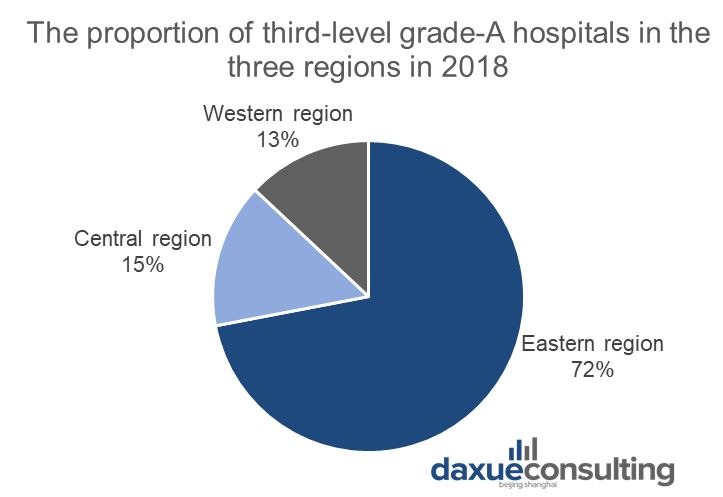
Data source: chyxx.com – The proportion of third-level grade-A hospitals in the three regions in 2018
Telemedicine in China’s ageing society
China’s huge population base has already put medical resources to a severe test. On top of this, China has encountered the problems of relatively unbalanced economic development and unevenly medical resources distribution. At the same time, China’s population is aging, and immense pressure is put on the younger generations to care for the elderly.
The United Nations issued a standard: as 65 years old people account for more than 7% of the total population, the country is considered an aging society. According to data released by Chinese National Bureau of Statistics (NBS), the proportion of the population over 65 years old has reached 11.9% in 2018.
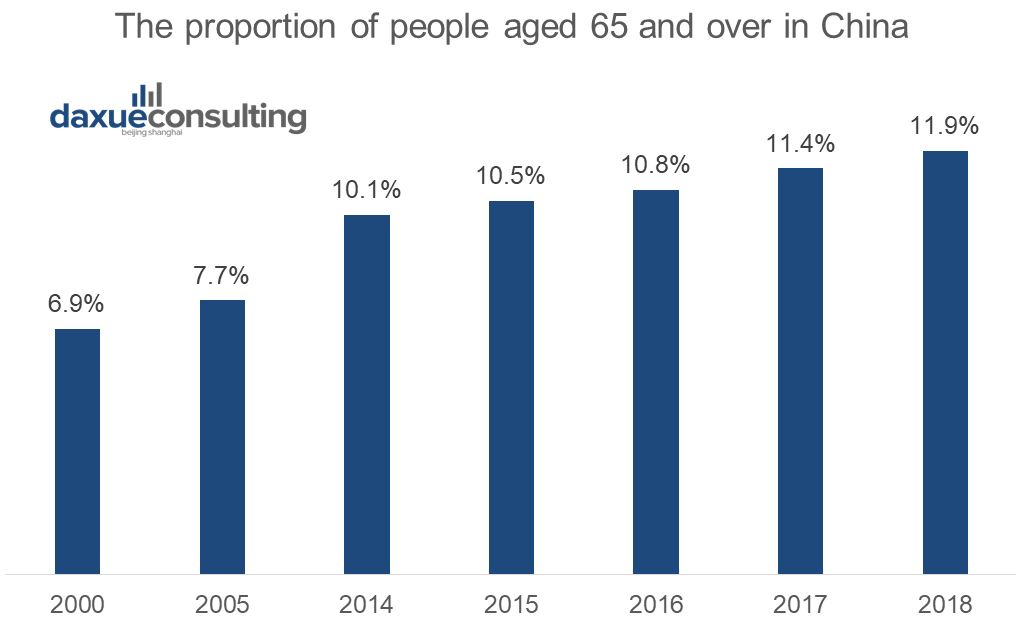
Data source: chyxx.com – The proportion of people aged 65 and over in China from 2000 to 2018
As the elderly have entered a period of decline, they are much more likely to be infected with various diseases than their younger counterparts, which greatly increases the market demand for medical resources. Telemedicine can solve the imbalance of medical services in different regions to a large extent as well as integrate and utilize medical resources through the Internet, which will be conducive to the stability of our society and the protection of people’s healthcare.
Telemedicine platforms in China under the influence of COVID-19
Accelerate the construction of telemedicine platforms in China from hospitals
Due to the COVID-19 outbreak, the urgent need for epidemic prevention and control has promoted the construction of telemedicine platforms in China from hospitals, which reached a new peak in February 2020, with 65 telemedicine platforms from hospitals built in a single month. During the epidemic, in addition to online outpatient services and pneumonia consultation services provided by existing telemedicine platforms, traditional public hospitals and other medical institutions also launched online telemedicine platforms on an emergency basis.
Previously, most of the public hospital informatization construction remained in the “digital hospital” level, such as “intelligent outpatient service”. The degree of informatization is mainly reflected in basic services such as hospital registration, consultation, settlement and medical record management. The epidemic has accelerated the construction of remote online consultation in hospitals and the real patient-oriented Internet diagnosis as well as treatment services which have begun to develop.
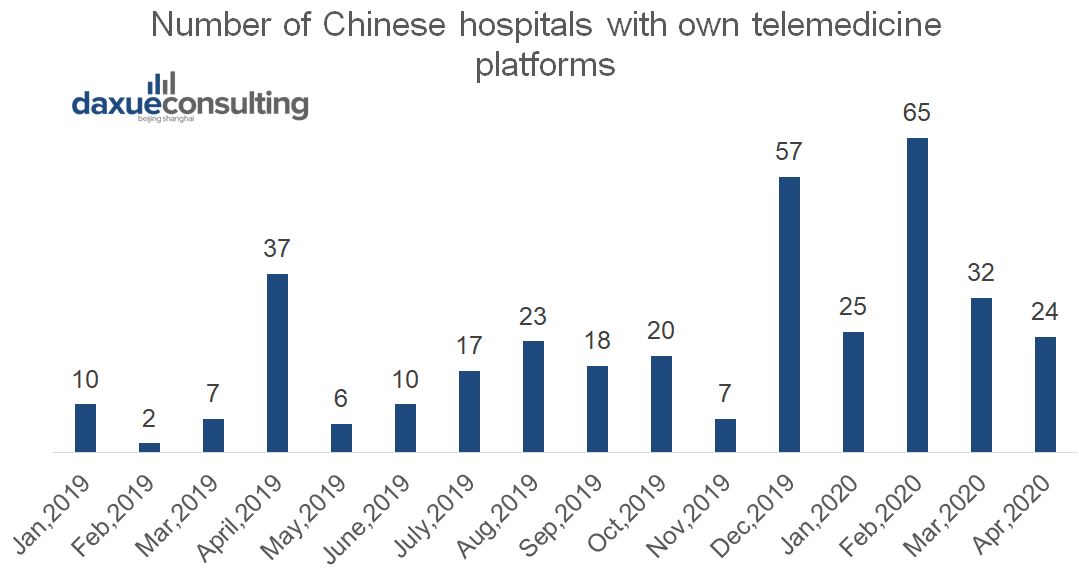
Data source: Xinhua.com – Number of Chinese hospitals with own telemedicine platforms from 2019-2020
Take one of the leading platforms – PingAn Good Doctor as an example
PingAn Good Doctor is the wholly-owned subsidiary of PingAn Group and leader in telemedicine services in China.
It covers four major business segments: online medical consultation, consumption medical care, health malls, health management and interaction. The number of users reached 5.67 million on February 5th, with an increase of 8.4% before the 2020 Lunar new year.
In terms of city distribution, the proportion of customers from new first-tier cities is the largest while the proportion of customers from first-tier cities is the smallest.
In terms of age distribution, consumers aged 24 to 30 account for the largest proportion.
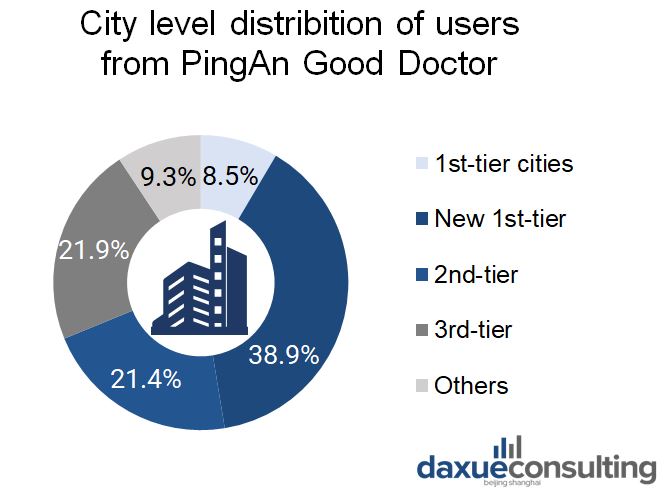
Data source: qianfan.analysys.cn, Ping’an Good Doctor users are disproportionately in first tier-cities.
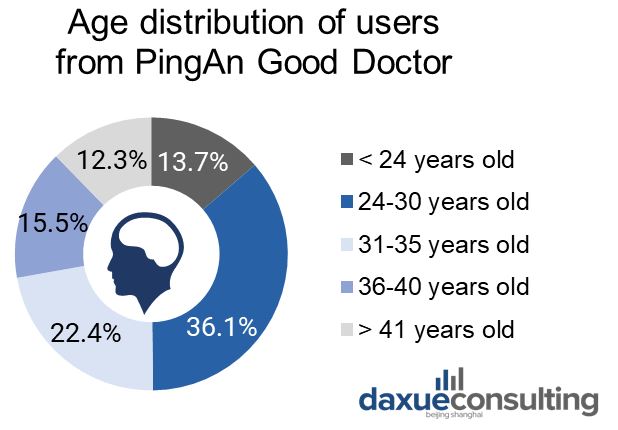
Data source: qianfan.analysys.cn, Ping’An Good Doctor users are usually young, although elderly are more likely to experience health problems
Monthly active users of PingAn Good Doctor app increased rapidly since January, 2020 (COVID-19 outbreak).
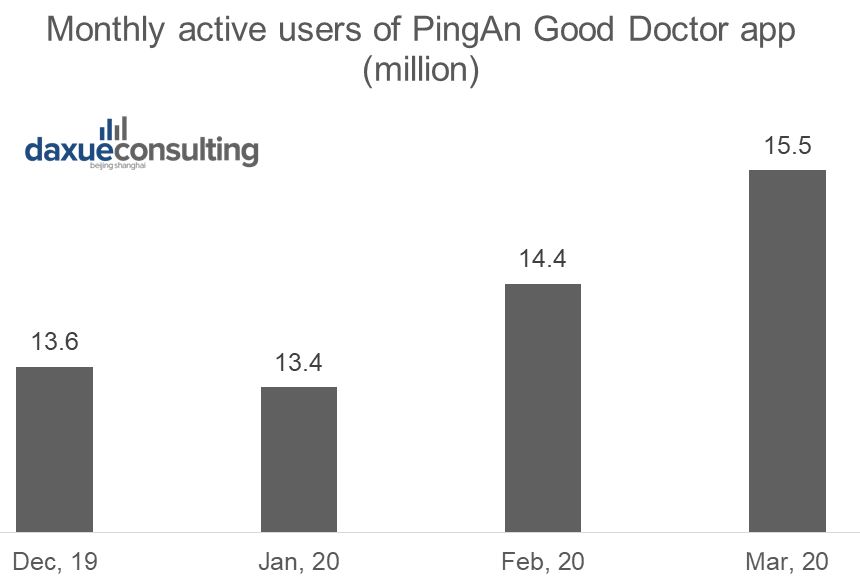
Data Source: qianfan.analysys.cn, monthly active users of Ping’an Good Doctor
Limitations and Opportunities
With the deepening of “Internet Plus”, Internet economy has become an important factor in China’s economic development. “Internet + medical treatment” has been constantly applied and developed.
The coverage rate of 4G network has reached more than 95% and 5G network has been officially commercialized. Software services, cloud computing, big data and other industries are developing rapidly, laying a good technical foundation for telemedicine. With the use of automated and intelligent technologies, telemedicine is gaining more and more recognition from patients. Therefore, it can drive the increase of huge demands and the potential space of telemedicine market will be huge.
Since 2009, a series of established policies have demonstrated the government’s strong determination to develop telemedicine. With the intensive introduction of policies, the policy environment of the telemedicine industry in China is clear and the industry will usher in rapid development.
However, the telemedicine industry in China has not yet developed a mature business mode, remaining some problems like vague pricing policies, uneven payment systems and wide variations in health care from place to place. Additionally, an obvious concern with telemedicine is that it is easy to ignore symptoms that can only be diagnosed in a “face-to-face” setting, leaving health-care providers vulnerable to negligence claims and insurance coverage. At the same time, patients are also prone to misdiagnosis or missed diagnosis.
Social habits and careful regulation hinder the application of telemedicine. For many people around the world including Chinese, the COVID-19 outbreak is already forcing a change in social habits that is likely to have a permanent positive impact on telemedicine.
Author: Qing Zheng
Listen to 100 China entrepreneur stories on China Paradigms, the China business podcast
Listen to China Paradigm on Apple Podcast






